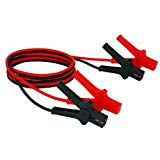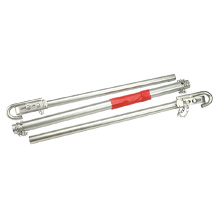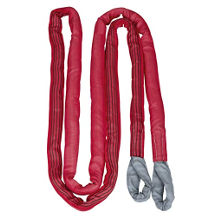Scissor jack purchasing advice: how to choose the right product
- What You Need to Know
- You can use a jack to lift your car sideways to change the tyre or carry out minor repairs.
- The lifting capacity and lifting height of the device must match the requirements of your car.
- A scissor jack is the cheapest option and requires a lot of power; manoeuvring and ram jacks are more expensive but work hydraulically.
- The vehicle should not be left on the jack for a long period of time, as it will slowly sink; an undercarriage block and brake wedges provide additional support.
- Drivers are not required to carry a jack in their vehicle.
Raise the wheels
When the first snow falls in winter and covers the roads, it is time to park the car’s summer tyres in the garage and bring out the winter tyres. Such a tyre change is quickly done with a jack. Even the most punctured motorist will be grateful for a jack in the boot: Lift the car, put the tyres “on” and drive on. In some vehicles, there is a jack in the boot as standard. But these tend to be simply constructed emergency solution models. For frequent drivers and hobby mechanics, a higher-quality device is recommended that provides a secure hold even after repeated use.
Those who decide to buy a jack can choose between four different types of models: Balloon, scissor, manoeuvring and ram jacks. Unlike the jack that may be included with your car, not all third-party products are compatible with your jack. But if you use the dimensions of your car as a guide, you will quickly find the right jack.
What you should consider when buying a jack
When buying a car jack, you should note that there are models in various sizes and power ratings. Above all, you need to know what kind of car you drive. For a simple small car, a simple jack is usually enough, while SUVs and lowered sports cars are built differently, which is why you also need a different jack. In addition, you should be aware of when and how often you want to use the jack: for occasional use in case of breakdowns, changing seasonal tyres every six months or for the hobby workshop at home. Jacks differ in design and operation as well as load capacity and lifting height.
Load capacity

Next to the lifting height, the lifting capacity is the decisive criterion for a jack. This value indicates the maximum weight the jack can lift and is given in tonnes. In most cases, one to two tonnes is sufficient for a small to medium-sized car. Van and off-road vehicle owners should go for a jack with a lifting capacity of 20 to 30 tonnes.
Lifting height
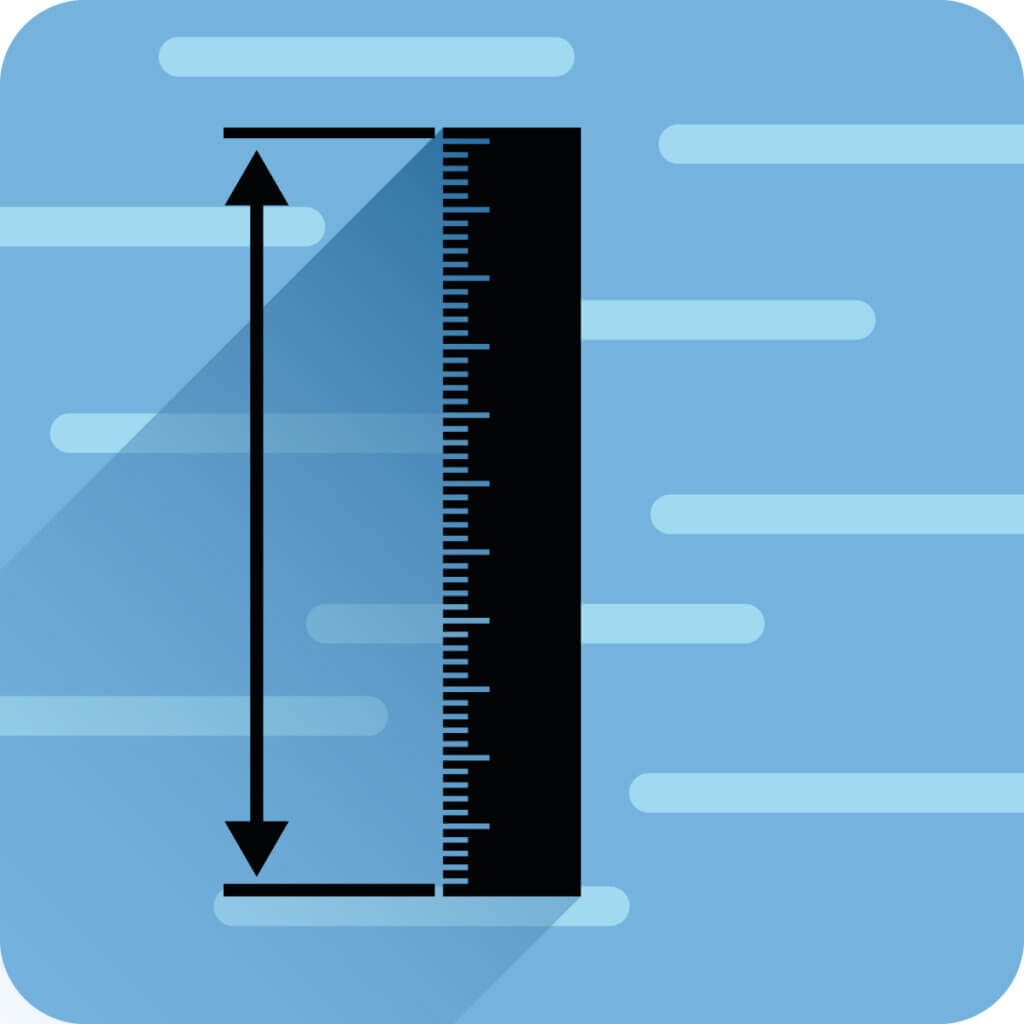
The lifting height indicates how high a jack can lift the vehicle and thus refers to the maximum height of the device itself. Jacks operate steplessly. You can set the lifting height to the millimetre thanks to a locking pawl. If you own a small car, a lifting height of 30 to 35 centimetres is sufficient. For lifting larger vehicles, you should choose a jack with a lifting height of at least 40 centimetres.
Underride height

This is the manoeuvrable height of the jack in its lowest position. The height is measured from the ground to the highest point, the support plate. Extra-flat manoeuvring jacks and scissor jacks are only about 10 centimetres high. Such models are especially recommended for lowered cars and sports cars. Ram jacks have a higher underride height of about 20 centimetres and are suitable for off-road or commercial vehicles.
Mechanics

Many jack models work hydraulically: you use a lifting rod to move the support arm or cylinder upwards. With scissor jacks, you have to use your own power. By turning the crank, you move a thread which you use to change the height of the jack. Pneumatically driven jacks work with the support of compressed air. These models require less effort and are mainly used in professional applications.
Test seal

When buying a jack, look for seals or certificates from technical testing organisations – for example, the “Tested Safety” seal (GS mark), which confirms compliance with legal safety standards. The CE mark is not a seal of quality, but an assurance by the manufacturer that the product meets the requirements. You should also look out for awards from testing organisations such as TÜV (Technischer Überwachungsverein) or GTÜ (Gesellschaft für Technische Überwachung mbH).
Equipment

Jacks should always be equipped with a safety valve that protects against overloading. This allows you to open the valve with a flick of the wrist and lower the jack. The length of the lifting rod varies depending on the model; the longer the rod, the easier it is for you to move the lever. You can attach various supports to the support plate. These are usually made of non-slip rubber and are studded, ribbed or otherwise structured. Swivel castors, which make it easier to position the jack under the car, are only fitted to manoeuvring jacks.
The jack quartet
The four different types of jacks are available in various price ranges and have different advantages and disadvantages. You can choose between balloon jacks, scissor jacks, manoeuvring jacks and ram jacks.
Balloon jack
Balloon jacks are very simple models that cost between 50 and 150 euros. The more expensive versions are mainly intended for heavy cars. The device includes a bag made of tear-resistant plastic to which a hose is attached. The way it works is uncomplicated: Place the balloon under your car and attach the hose to the end of the exhaust. Then start the engine. The exhaust gases are pumped through the hose into the balloon, which thus gains volume and lifts the vehicle. Balloon jacks may only be used on exhaust systems with one pipe. Systems with two pipes could be damaged.
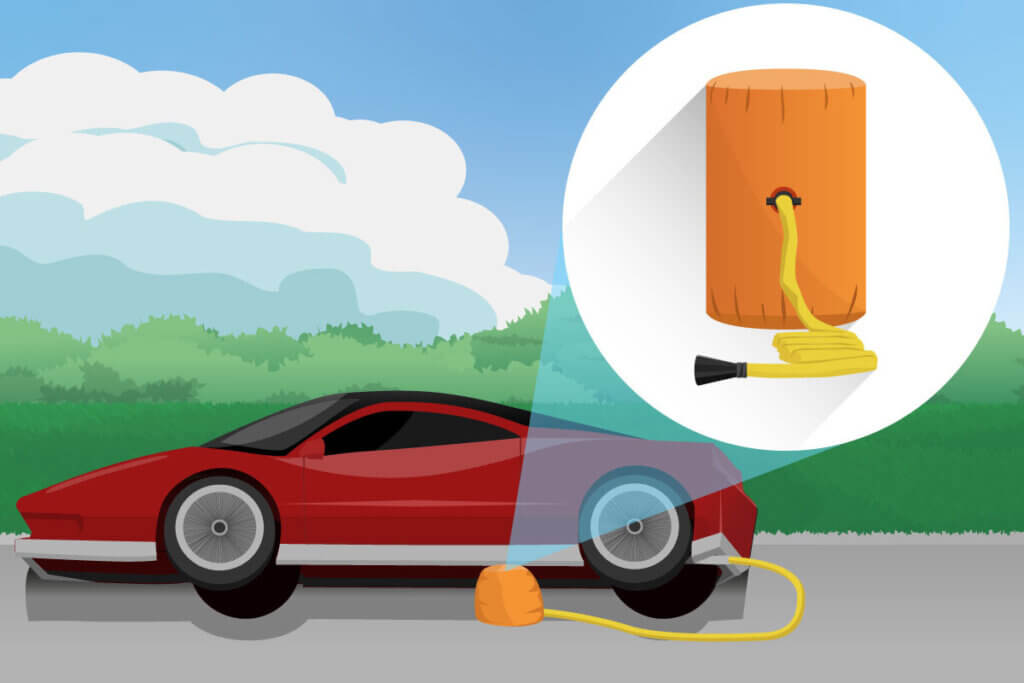
These jack models are particularly suitable as breakdown lifters because they are very light and easy to store. Lifting also requires no force and can be done on uneven ground, as the balloon adapts to the surface. You should, however, use undercarriage blocks to help because the car is not particularly stable on the rather wobbly balloon. Keep an eye on the jack during the tyre change and check in advance that there is no damage to the components. The seams of the balloon must not tear and the tube must sit securely on the exhaust. Your vehicle must also not weigh more than three tonnes, otherwise the balloon could tear. The jack is not suitable for further work or other checks under the car due to instability and the corresponding safety risks.
- Lifting capacity: up to 3 tonnes
- Lifting height: 0 to 600 millimetres
Pro Points
- Quick to use
- No effort required
- Light and space-saving
Drawbacks
- Damages quickly
- Hose easily detaches from exhaust
- Not suitable for regular use
Scissor jack
Scissor jacks are the cheapest and simplest model types. The very light and compact devices are available for as little as 10 to 20 euros. More expensive models cost around 70 to 80 euros. Since they can be used quickly, they are particularly well suited as breakdown jacks.
The jacks are designed in the shape of a rhombus with one side or corner resting on the ground. A thread holds the construction together. A threaded rod runs through the horizontal axis, the longer of the two, and a crank is attached to it. As soon as you turn the crank, the rod is set in motion and the joints of the device are pulled together. The jack works on the toggle principle and does not need hydraulic assistance. This is also the big disadvantage of scissor jacks: Cranking requires a lot of strength and becomes exhausting over time. Motorised variants, on the other hand, are particularly convenient to use. All you have to do is connect the device to an external power source, such as your car’s cigarette lighter. The motor then does the cranking for you.
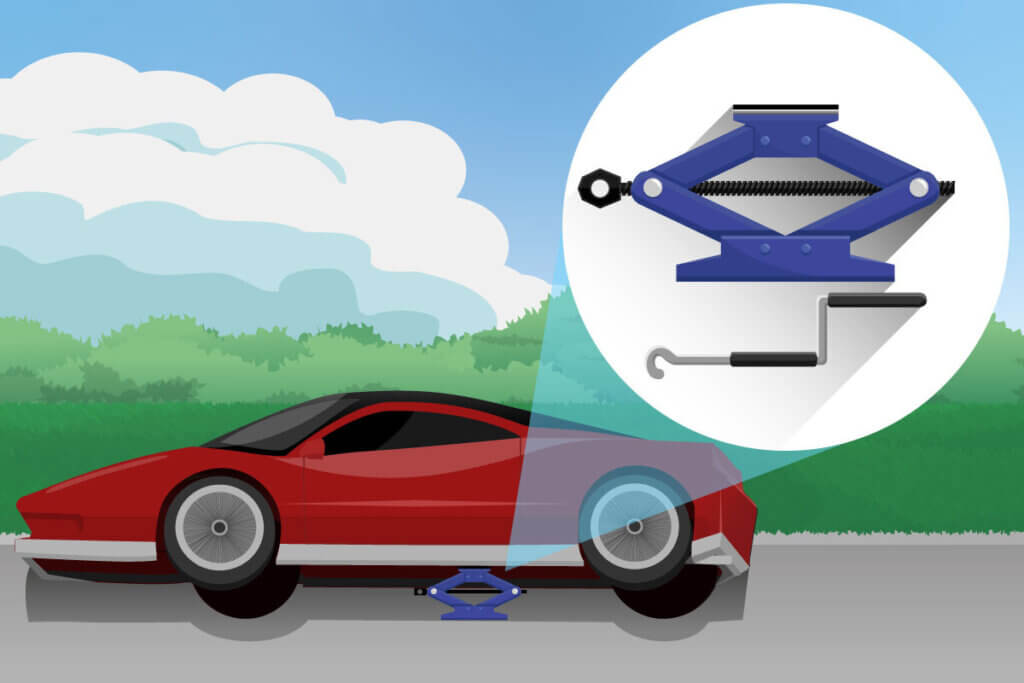
Thanks to the diamond shape, which can be cranked very flat, the under-run height of scissor jacks is very low; they even fit under your car with low ground clearance. However, the lifting height is also limited; the models can be used up to a maximum height of 30 centimetres. Their lifting capacity of two tonnes is comparatively low and only suitable for small and medium-sized cars, which is why these devices are primarily used in the private sector. In addition, scissor jacks are designed for longer periods of use, as the design prevents the vehicle from sinking.
The Storz jack is a variation of the scissor jack and is standard in the boot of many cars. It consists of only one axle, which is also extended with a crank. This makes it more space-saving than the diamond-shaped version, but not as stable.
- Lifting capacity: Up to 1.5 tonnes (electric models up to 2 tonnes)
- Lifting height: 100 to 350 millimetres
Pro Points
- Extremely compact and light
- Can be used quickly
- Very flat
- Inexpensive
- Stable tray
Drawbacks
- High effort required
- Little load capacity
- Low lifting height
Manoeuvring trolley jack
Manoeuvring jacks are available for as little as 20 euros. Professional devices designed for well-equipped workshops cost between 100 and 300 euros. The devices work hydraulically: a pump is set in motion via the lever arm, which raises the arm of the jack. When you want to lower the vehicle again, all you have to do is open the valve by turning or repositioning the lifting rod.
The biggest advantage of manoeuvring jacks is their manoeuvrability. There are four rollers underneath the device, usually two of which can rotate around the axis; the others are fixed. The rollers not only simplify fine adjustment, but also make transport easier, as the jacks weigh between 15 and 30 kilograms. Thanks to their heavy weight and sturdy construction, the devices stand very securely under the car and do not tend to tip over.
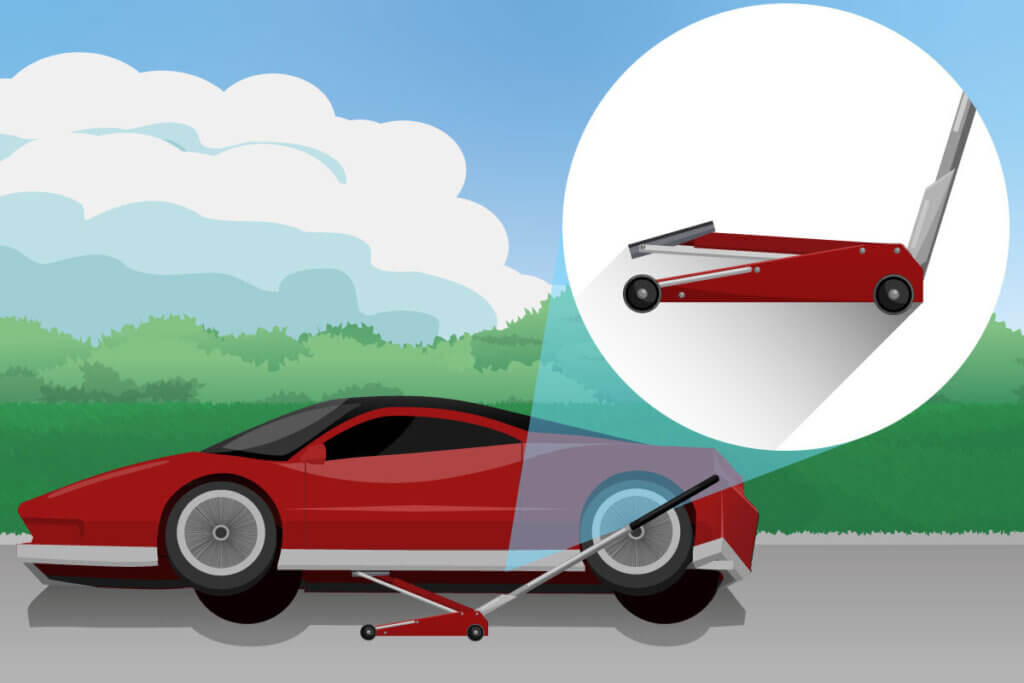
Manoeuvring jacks are extremely flat in the starting position and are therefore also suitable for lower vehicles. Although the lifting capacity is comparatively low, the lifting height is very high. If you work on your car over a longer period of time, you should readjust it occasionally, as the lifting height tends to decrease steadily. The vehicle consequently sinks over time, which is why you should resort to jack stands. All in all, manoeuvring jacks are very comfortable to handle and can be used in an energy-saving way. Due to their heavy weight, they are primarily suitable for stationary use in the garage at home.
- Load capacity: 2 to 4 tonnes
- Lifting height: 100 to 800 millimetres
Pro Points
- Power-saving
- Good manoeuvrability
- Considerable lifting height
- Safe stand
Drawbacks
- Mainly stationary use
- Takes up a lot of space
- Lifting height decreases over time
Ram jacks
Ram jacks are the most powerful models and work either hydraulically or pneumatically. You use a lever to generate pressure inside, which pushes a piston upwards from the cylinder. The rising piston in turn lifts the vehicle. Pneumatic devices also work with compressed air, which reduces the force you have to exert to lever. The cylindrical ram jacks are also very compact, so you can easily stow them in the boot. Due to their design, the devices only have a small standing and supporting surface, which affects stability. You should therefore not use these jacks for longer work under the car. For stability, it is advisable to clamp a wooden board between the floor and the jack.
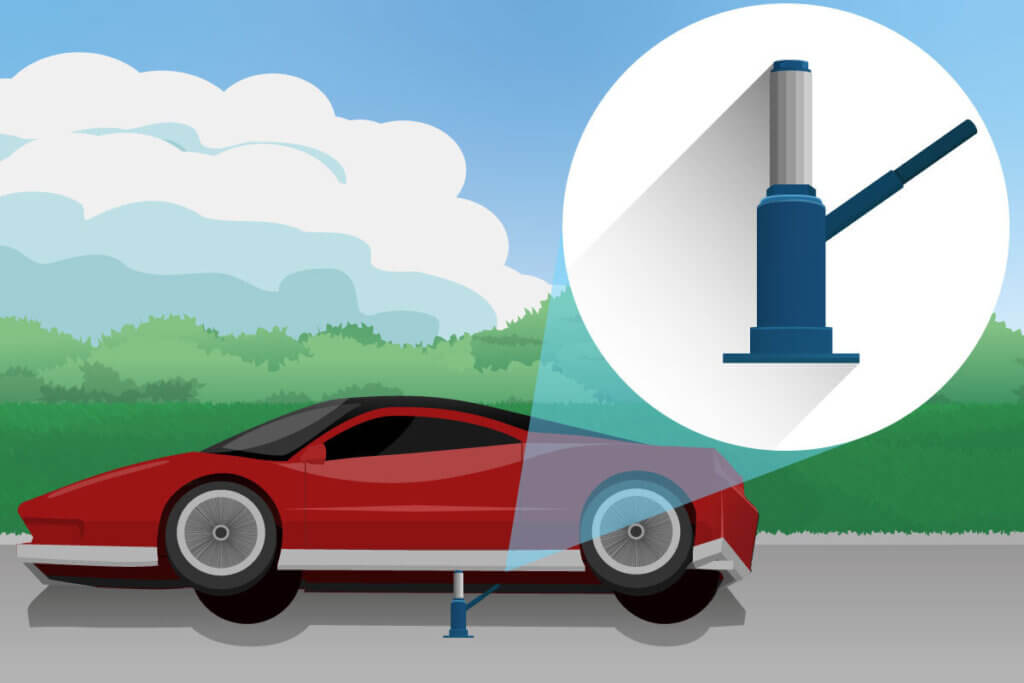
Stamp jacks are very massive and correspondingly heavy. They can lift at least two tonnes; the highest-quality models can even lift between 20 and 30 tonnes. The lifting height can be extended with a spindle thread. Two-ton jacks can be purchased for as little as 20 euros and are perfectly adequate for lifting a passenger car. Pneumatic jacks, which are mainly found in professional workshops and in the commercial vehicle sector, cost well over 100 euros. Due to their high lifting capacity, they are also used in the private sector, for example for motor homes or SUVs. Be aware that ram jacks do not fit under every car. Therefore, especially car users should first take a look at the height of the jack.
- Lifting capacity: 2 to 30 tonnes
- Lifting height: 150 to 500 millimetres
Pro Points
- High lifting capacity
- Considerable lifting height
- Very compact
Drawbacks
- Large underride height
- Small support surface
The correct use of a jack
Always make sure that you apply the jack correctly and that it stands securely before you lift the car. Otherwise, both the jack and the car will be easily damaged. The car and the jack should be on a level surface. Now apply the handbrake and put the car in first gear. If you have a car with automatic transmission, put it in P position. The “Park” position prevents the car from rolling away. Nevertheless, as a precaution, place brake wedges under the tyres in case the ground is uneven contrary to expectations. A wooden board under the jack prevents it from sinking on soft ground. If the jack tips over or the lifting height gives way, a support block under the car provides additional support. Jack stands are usually three- or four-legged and resemble a camera tripod. The maximum support height is around 400 millimetres and the load-bearing capacity is several tonnes.
Usually cars have a reinforced fold on the underbody, i.e. a ledge or edge, between the front and rear wheels. Position the jack there; do not use the device at the rear or front. Use a rubber support plate to protect the paintwork and the bodywork. Ideally, the trough of the jack should fit exactly into the fold of the car.
For a safe journey
Once you have decided on the right jack, there are only a few things to consider apart from its correct use: Jacks are only suitable to a limited extent for working under the car and are not mandatory equipment.
Are car jacks suitable for work under the car?
Jacks are suitable for changing tyres and, if necessary, for short checks on the wheels and the lower bodywork. However, you should not use a jack for longer work under your car, as it does not provide enough safety. A safe alternative are ramps. The car stands on a ramp and has a safe and firm footing if you also secure the wheels with brake wedges. Only for changing tyres are drive-on ramps not usable, as the wheels are not freely in the air. Such ramps are intended for stationary use in the garage at home.
Do car jacks belong to the compulsory equipment of a car?
Unlike a warning triangle, high-visibility waistcoat and first-aid kit, a car jack is not one of the items you have to carry in your car. Some manufacturers include a jack as standard equipment in their vehicles, usually if a spare tyre is also included. Newer cars often have a puncture repair kit instead: this contains a special foam that you pump into the defective tyre. The foam expands and allows you to drive on to the next garage. A damaged tyre must be changed in any case.

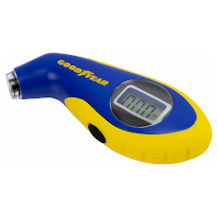
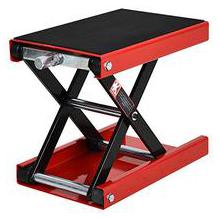

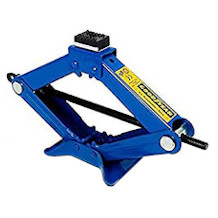


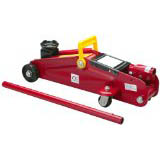
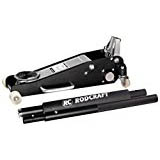
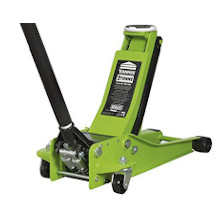
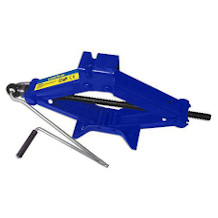
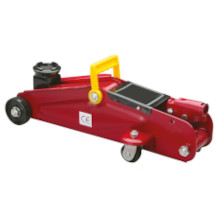
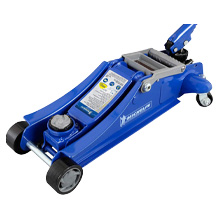
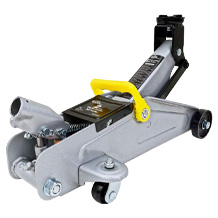
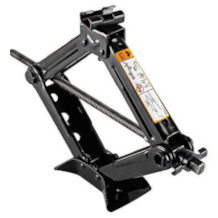
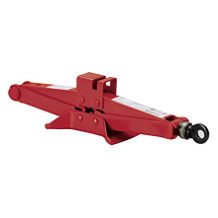
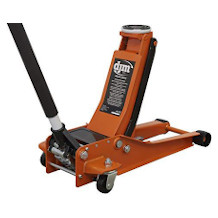

 3,544 reviews
3,544 reviews


